After a couple of years of having sprinkler irrigation in our orchard, we felt like our irrigation was not working well.
The well on our property was dug in the 1970s, and over the time has filled up a bit with silt. This has led to issues with watering the orchard, and despite our trees growing, flowering and fruiting, we felt they were not getting enough water.
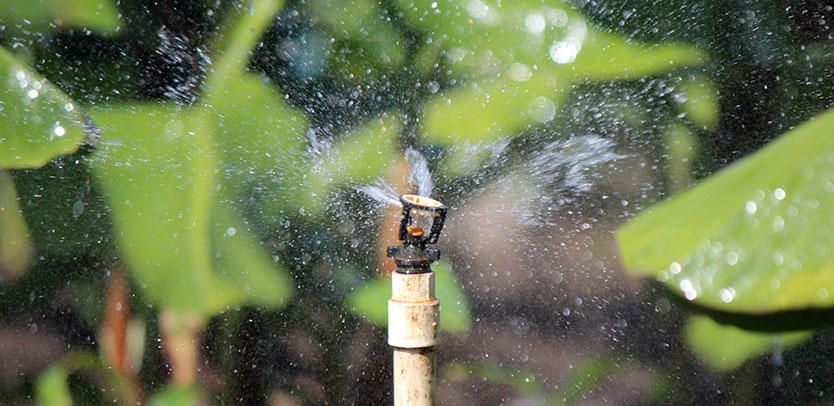
Up until now, we have used the Senninger Mini Wobbler sprinkler heads. They are really fantastic sprinkler heads, they've withstood the harsh Arizona summer sun for about 5 years now, showing no real signs of wear and tear, and worked brilliantly. We watered the trees at night to ensure that there was minimal evaporation, and put them on for long enough to ensure the ground would be soaked.
I don't want to water the grass
Unfortunately, as is the case with sprinklers, the trees were not the only things being watered. In Arizona we also get an incredibly vigorous rhizomatous grass which spreads EVERYWHERE. This grass soon covered the entire orchard ground, and we were relatively certain that the grass was soaking up at least as much water as the trees were.
Things needed to change, and we decided to start with how we irrigate.
Always do your research
It's not always fun to do research, but it pays off in the long run. When we started our orchard, we didn't really do too much research into how much water the trees would need. We set up the irrigation system, naïvely thinking it would be enough, and let the trees grow.
Over the years we had seen various other irrigation techniques used in a variety of places within Arizona. In some areas canals bring water for flood irrigation, and in other areas people use berms and swales to do a more localized version of flood irrigation. None of the options seemed viable for us.
We decided to try out drip irrigation.
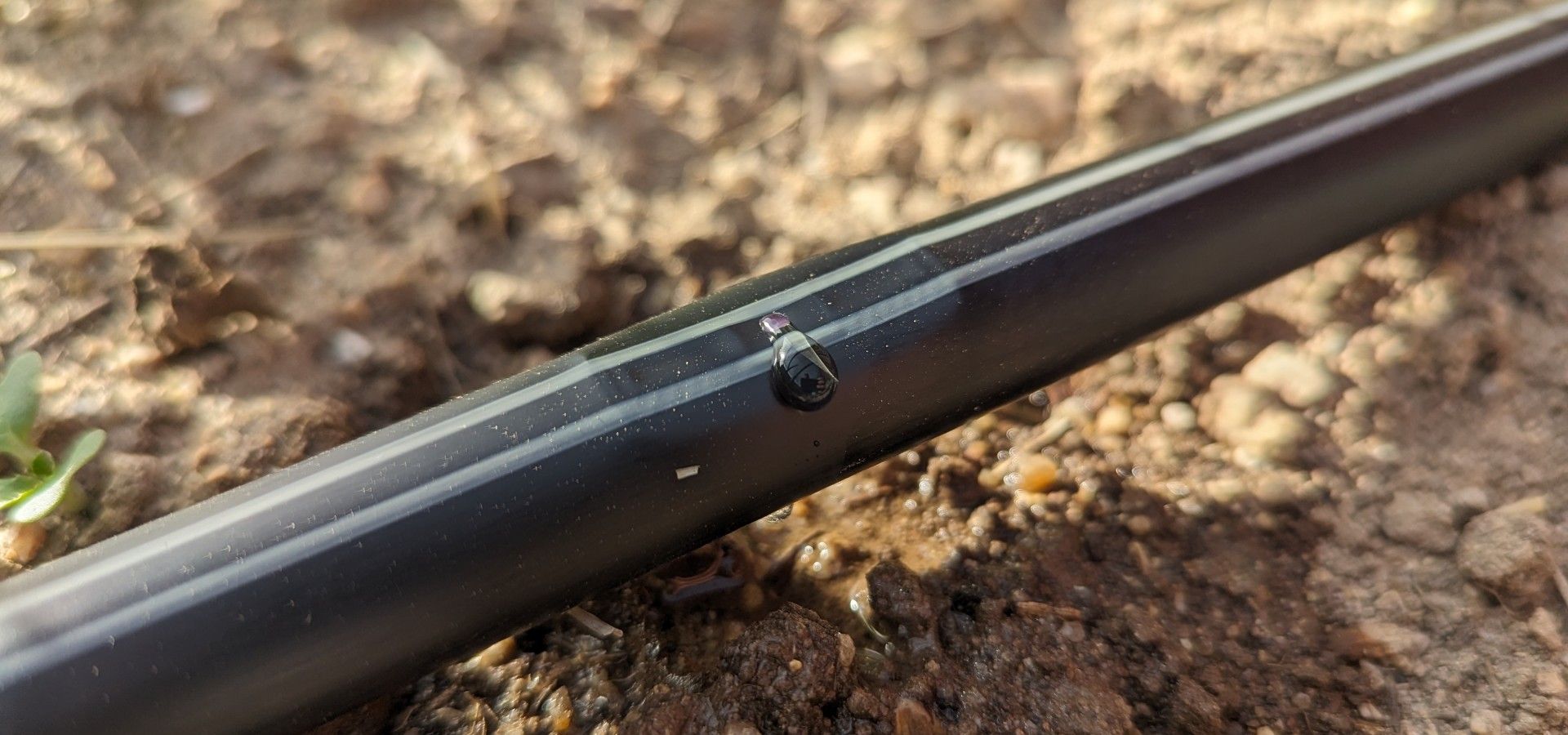
After doing more research into how much water each of the trees needed, exactly how to water our particular soil type (we have clay), and the best way to set up irrigation for an orchard, we settled on drip line around each tree.
Here are the details we calculated:
- 0.5 gallons per hour emitters
This flow rate is recommended for clay soils - 24 inches between emitters
Using a circular drip line, this places the emitters at just over 15 inches away from the tree, where the roots are - Water for 2-4 hours every second night
But drip irrigation is not enough, we really want to give our trees a leg up.
Speeding up fruit tree growth
One of the YouTube channels we watch is David the Good, who has some great tips on growing fruit trees. In particular, David has two helpful videos, Why Your Fruit Trees are Growing Slowly and The Trick to Make Fruit Trees Bear Quickly.
Armed with this information, we decided that we needed to remove the grass and at least put down mulch to help our trees.
Getting things done
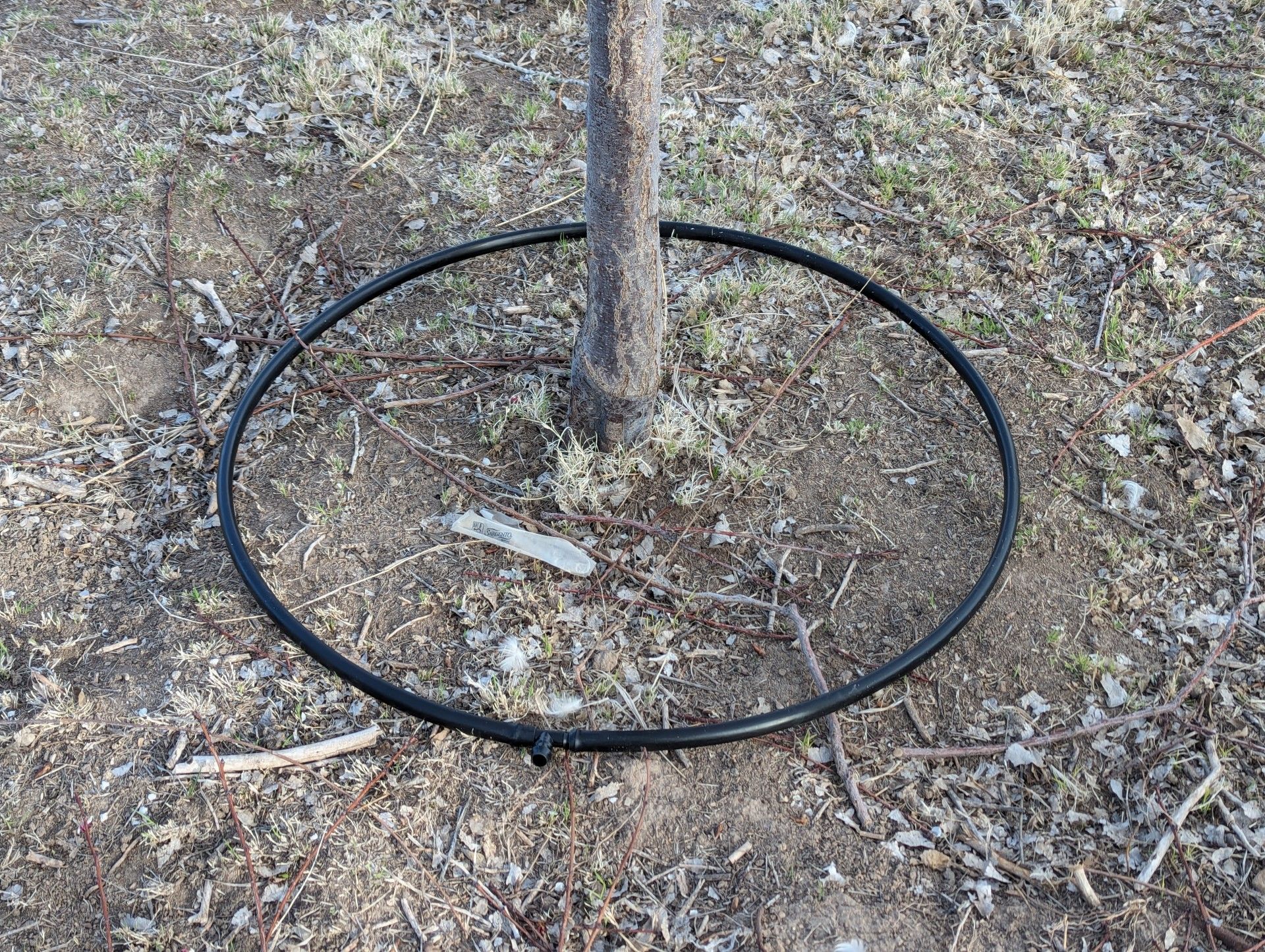
So with our plan of action, we got to work. First, measured out each circle of drip line, and added a barb tubing tee to complete the circle and provide a way to get water into it.
Then, once we had enough circles, we started removing the grass from around the trees. This was definitely the worst part.
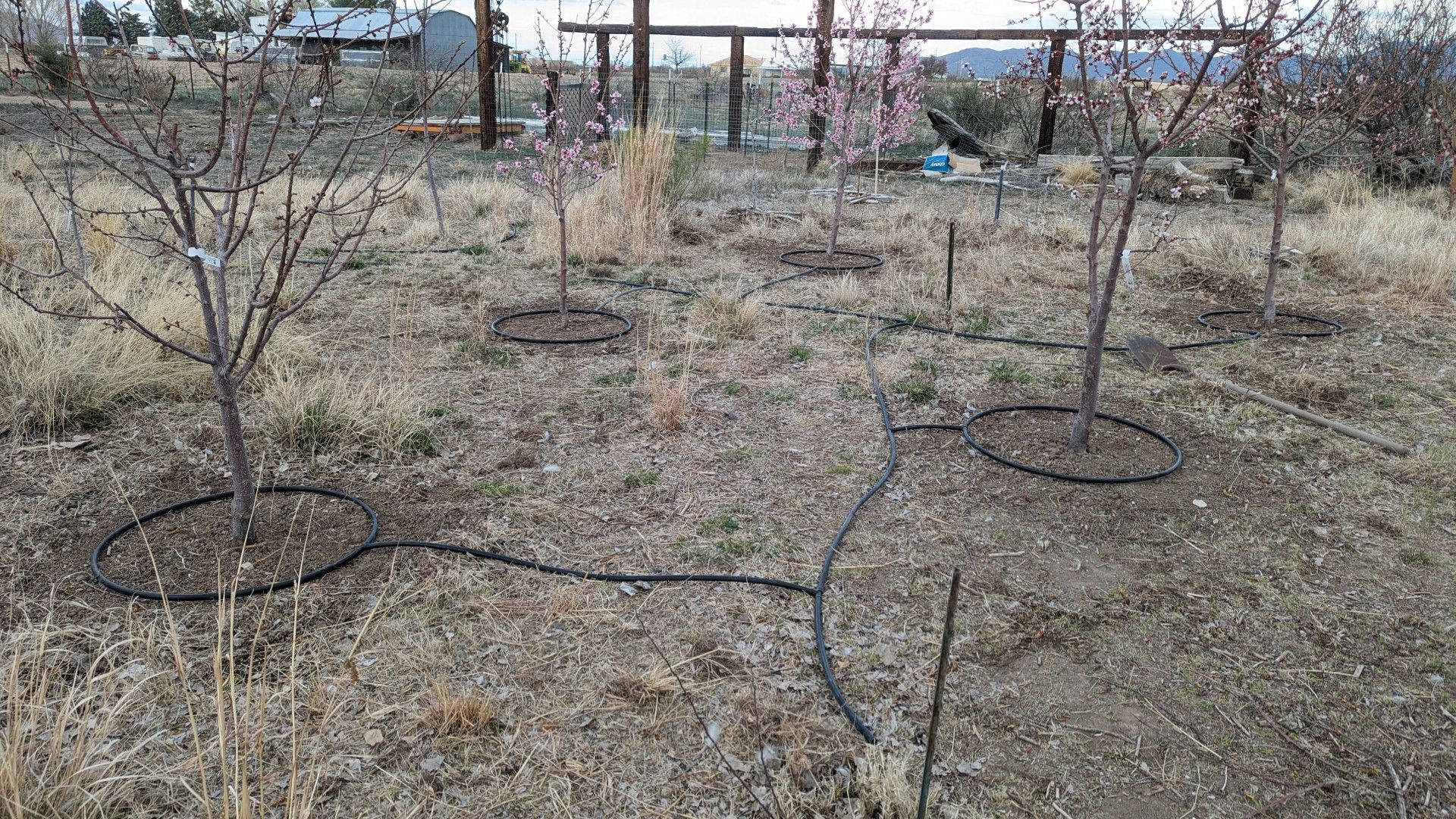
With the grass gone, we connected up all the water lines to the drip irrigation. Then we switched on the irrigation to make sure that nothing was leaking, and that everything was working.
Before we went any further, we hammered some fertilizer spikes into the ground to feed the trees over the next 6 to 12 months.
The next step was to wrap some woven ground cover around the base of each tree, to make sure that the grass could not grow up through the gap between the cardboard we were about to lay down and the trunk of the tree.
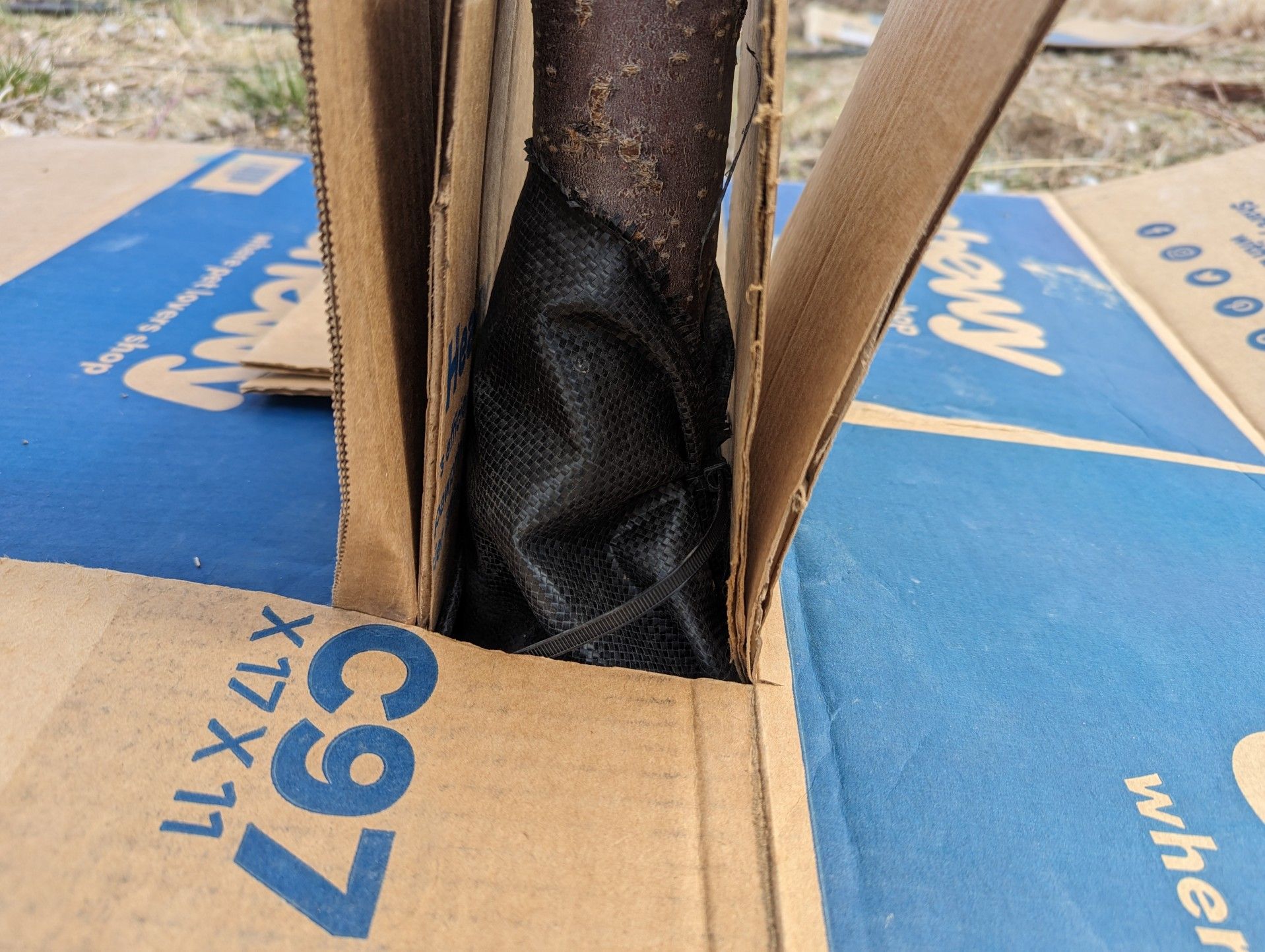
On top of the woven ground cover and the irrigation, we placed cardboard. Hopefully this should prevent the grass from growing, or at least stifle its growth so that the tree does not have to compete with the grass.
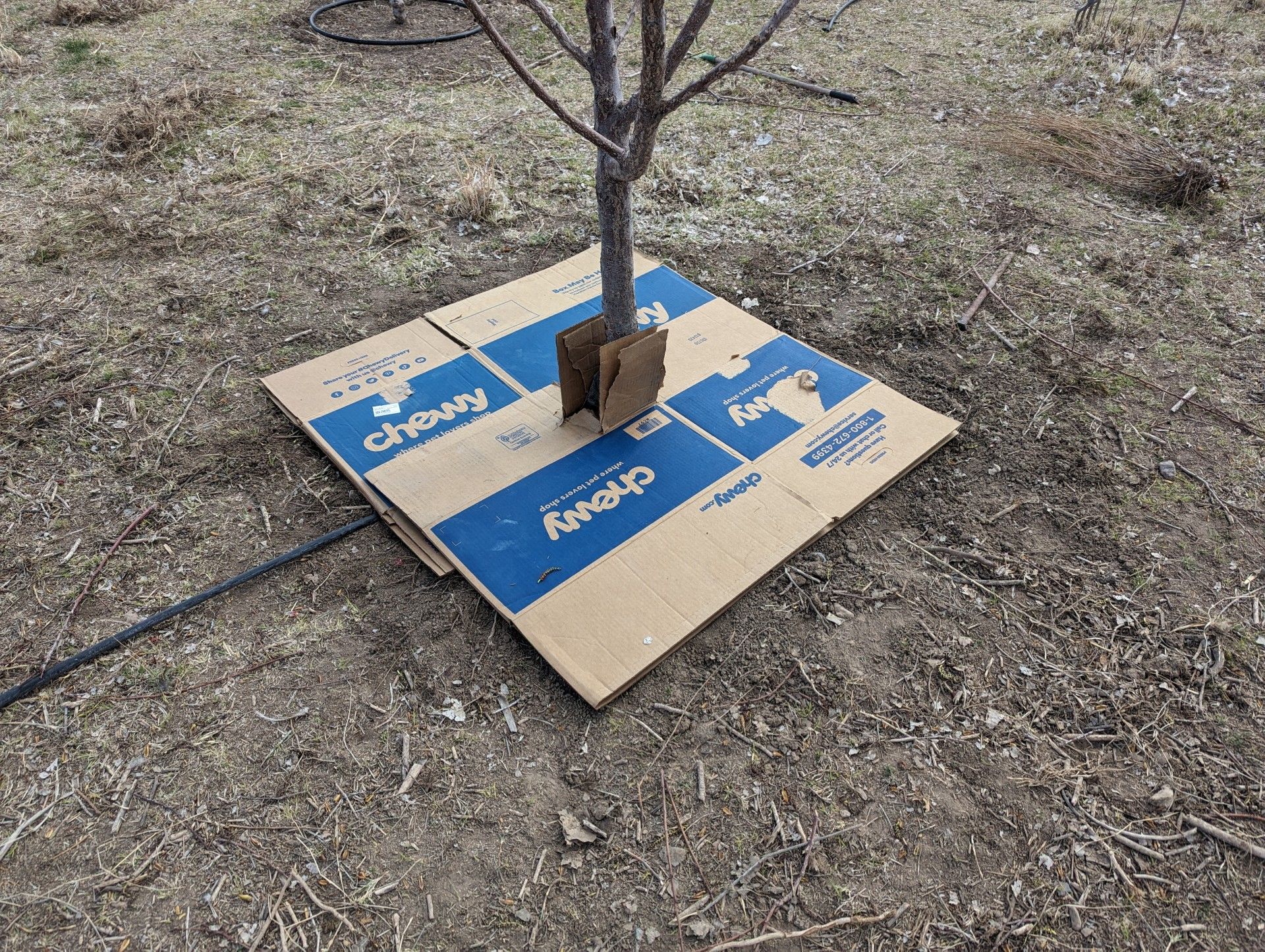
After placing the cardboard, we gave it a thorough soaking. This will prevent it from soaking up any water from the irrigation below it, and weigh it down.
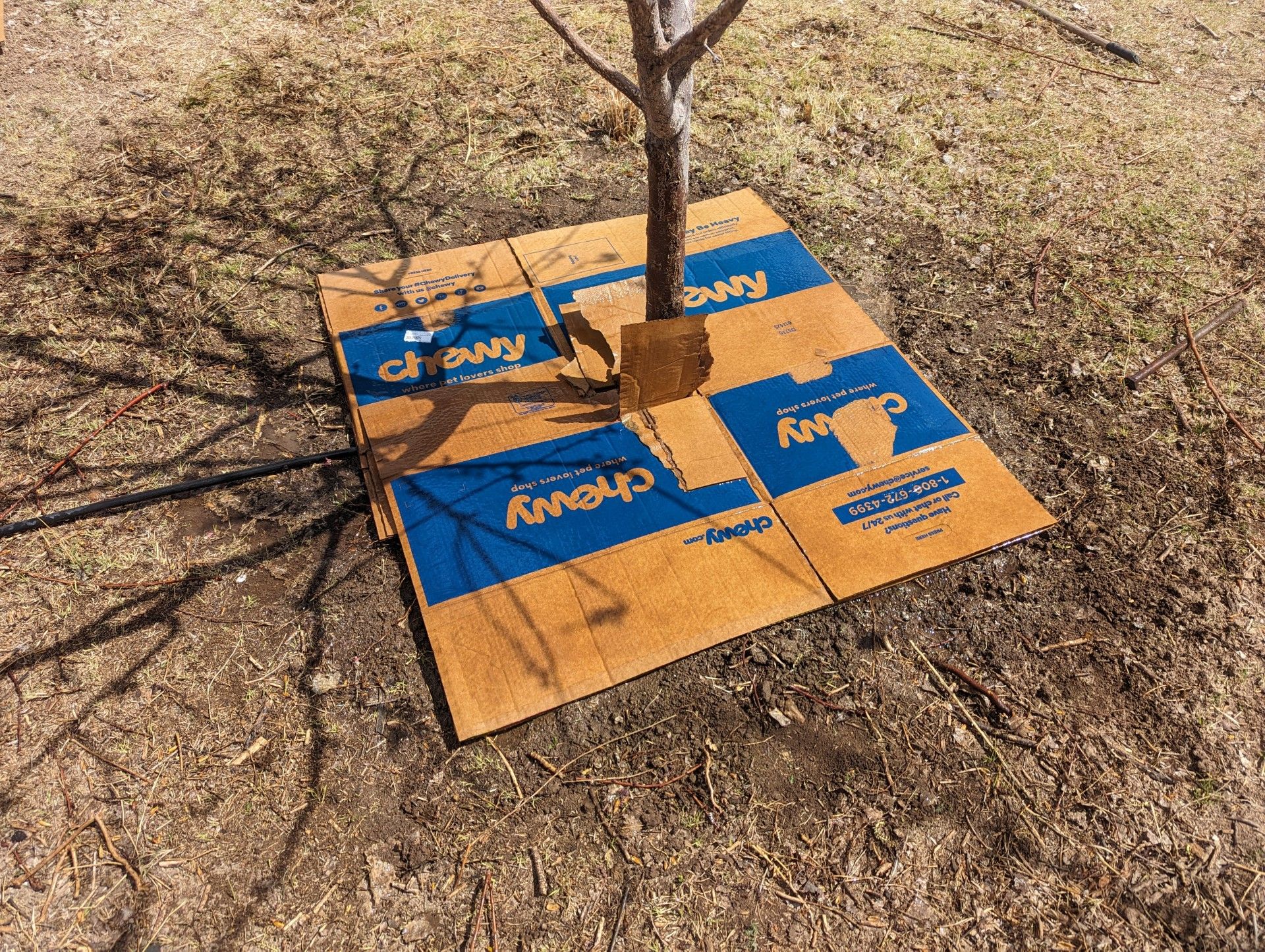
Once the cardboard was satisfactorily wet, we covered it up with about 4-6 inches of old bedding from our goats as a mulch and as a compost to be. As the bedding breaks down over the years, it'll become more like compost, and the manure in the bedding will help to feed the trees. We also watered down the mulch/bedding.

Finally, as a protective layer, we added woven ground cover on top of the mulch. Our chickens and ducks free range, and they LOVE digging through this stuff, so we had to make sure they couldn't get in there and mess it all up. Especially after all the work we put into it.
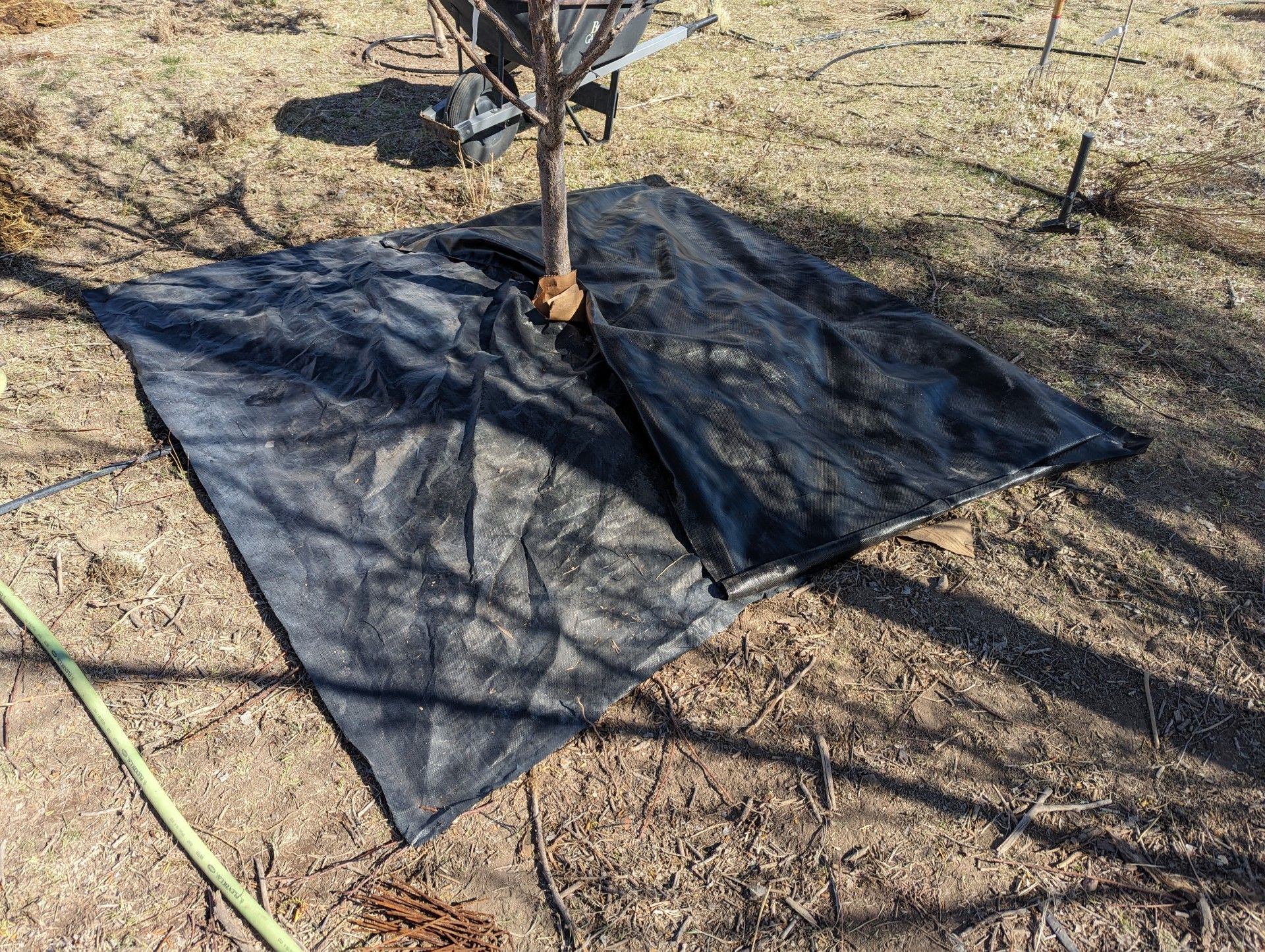
And with that, our irrigation upgrade was complete!
Where to Buy
You're no doubt asking where we bought our irrigation supplies. I'm happy to tell you that we got them from Drip Depot. A number of the market gardeners and homesteaders I watch recommended them, and I also highly recommend them. They have a fantastic YouTube channel, their prices are reasonable, and their service is great. They did not sponsor me to say this, I just really like them.